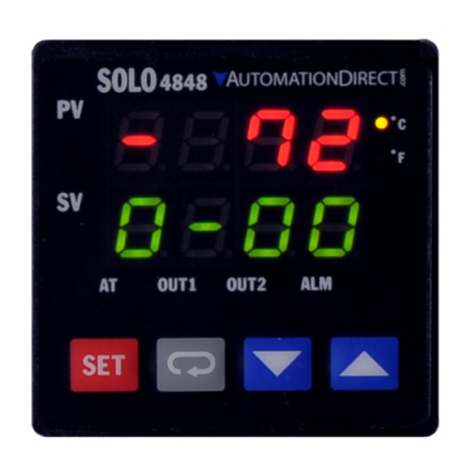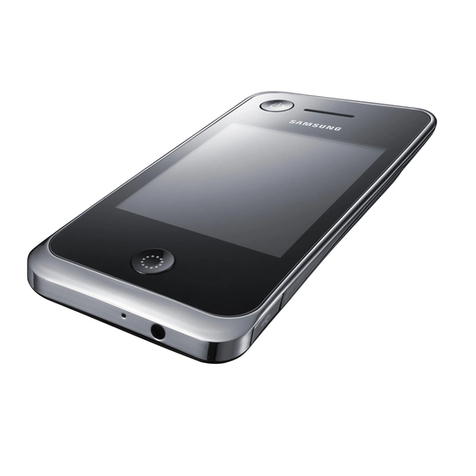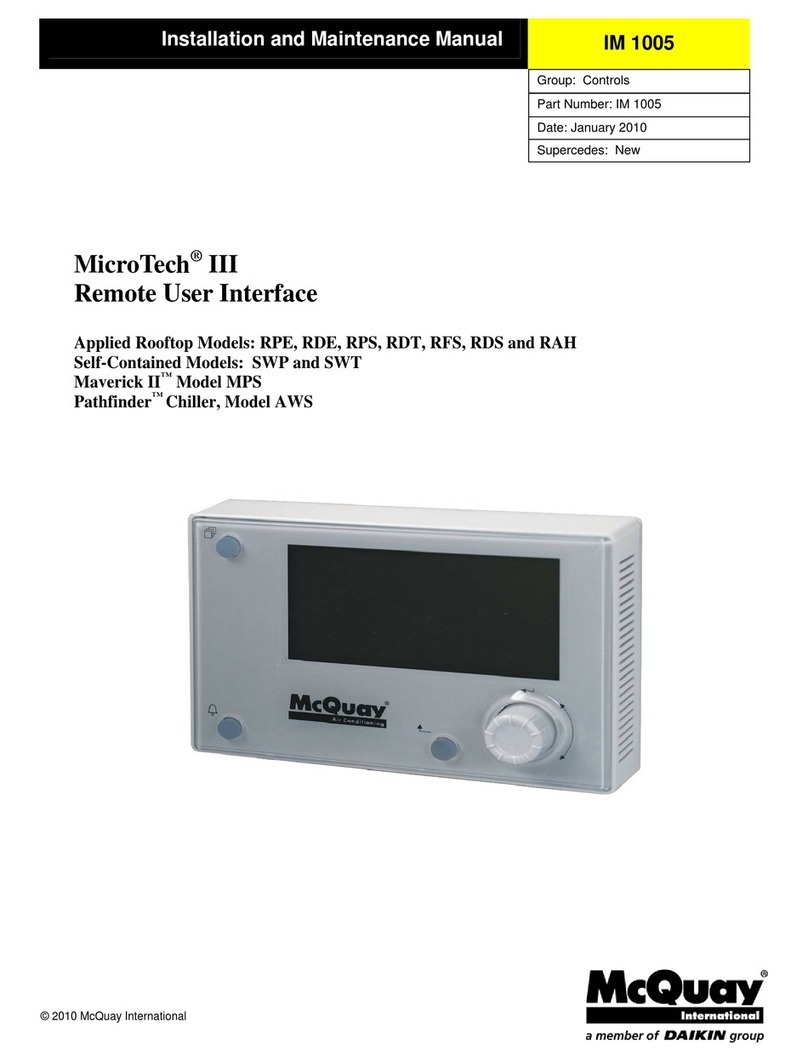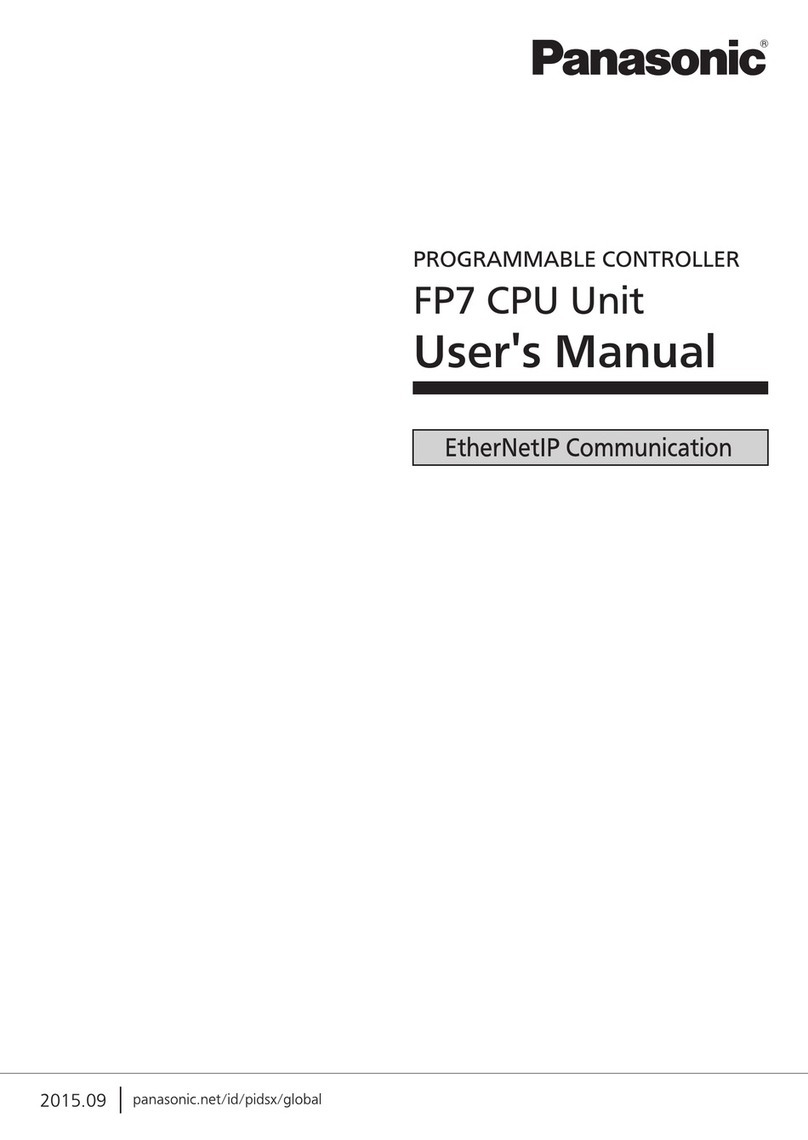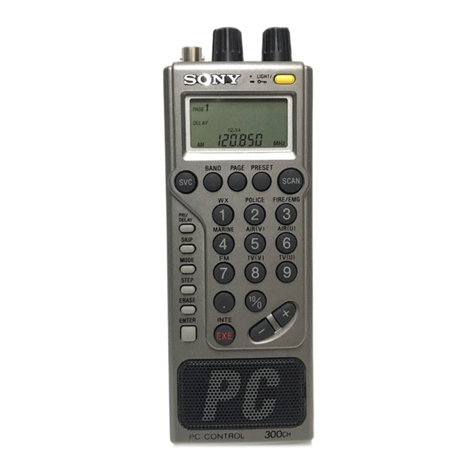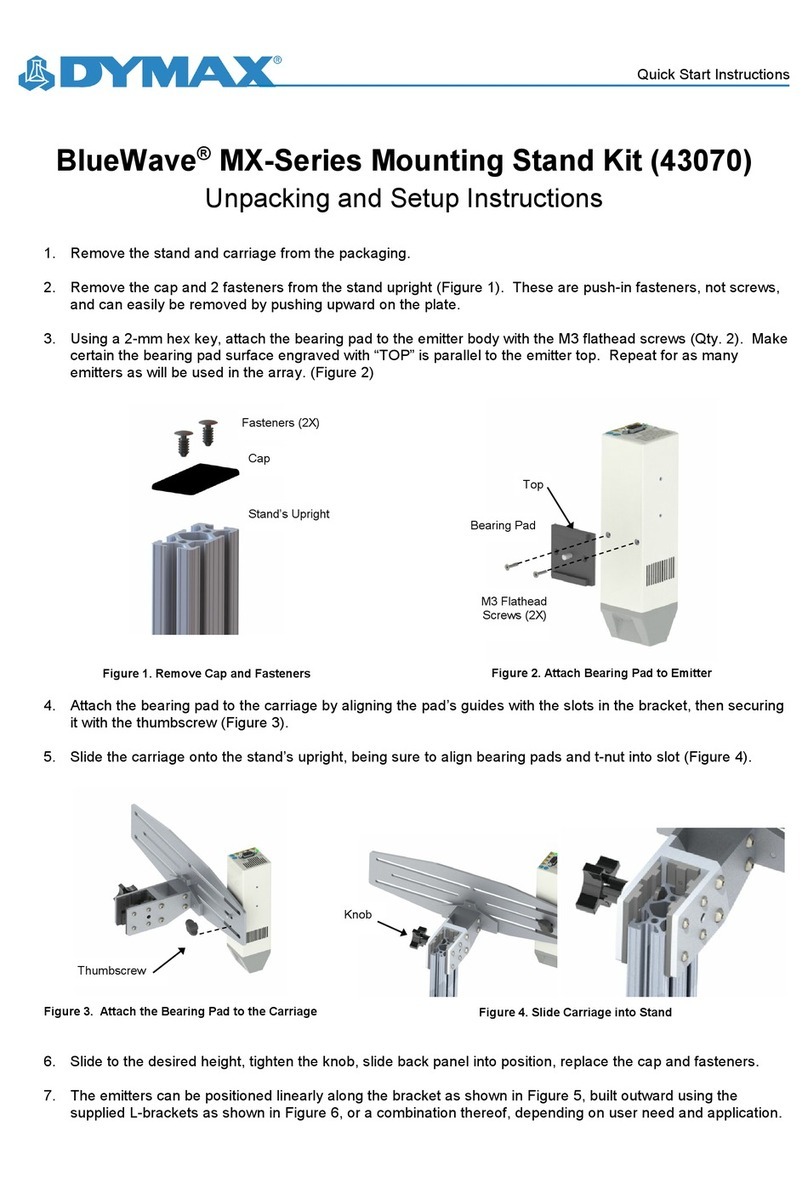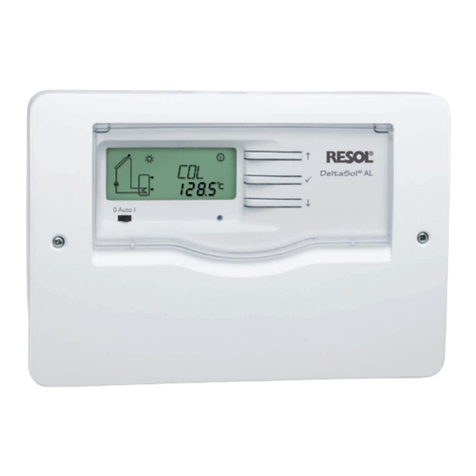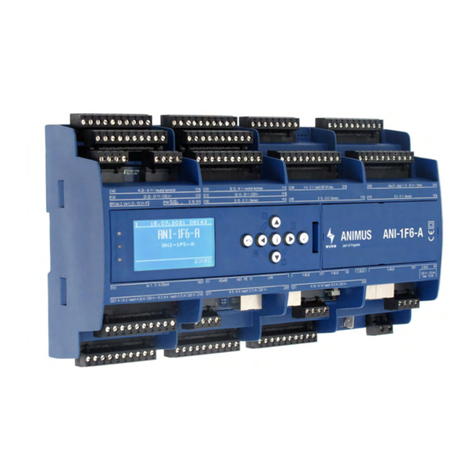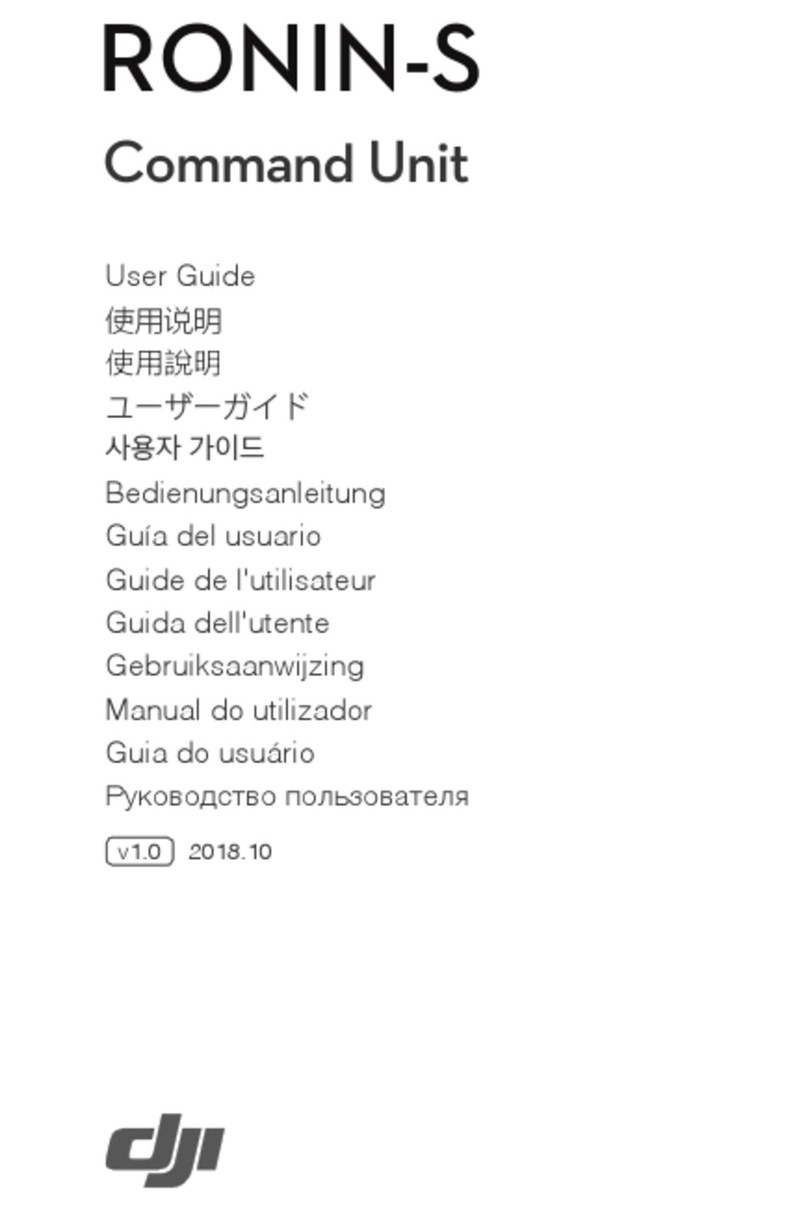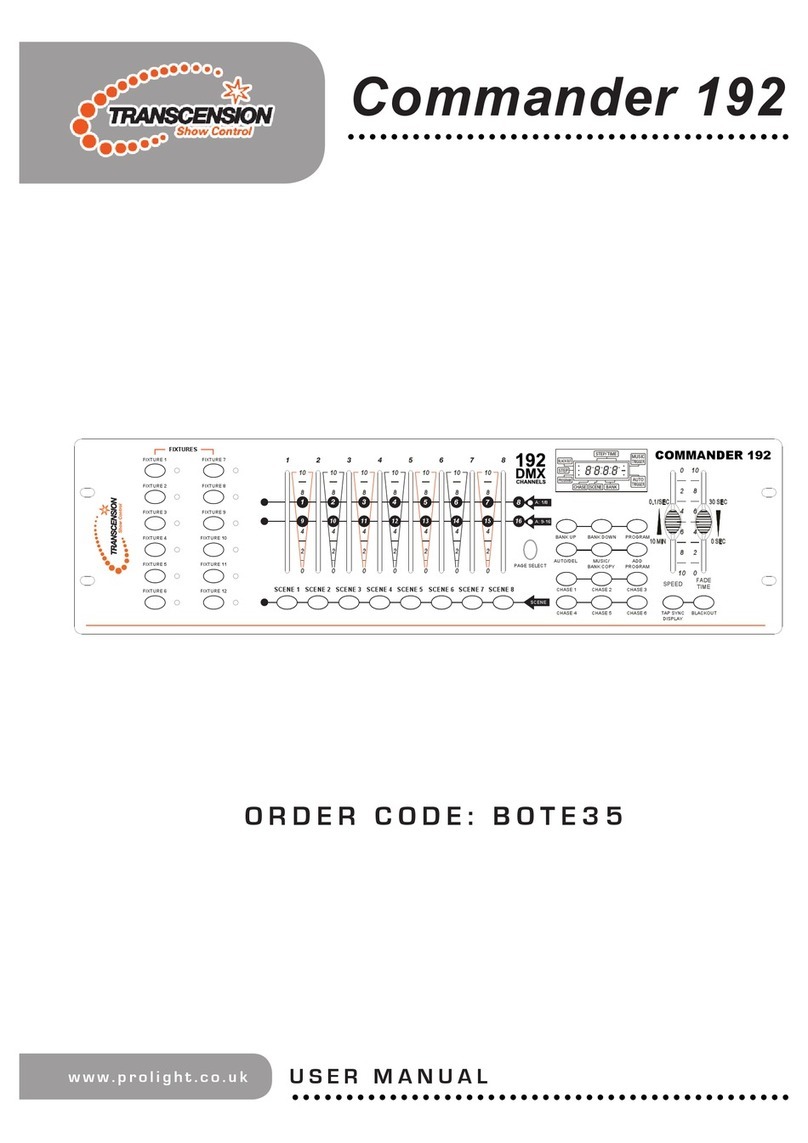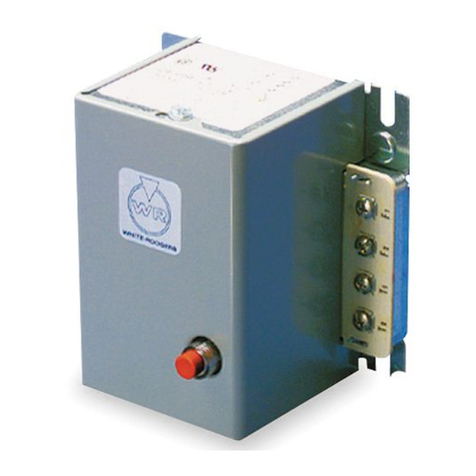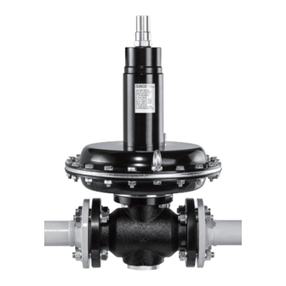Apeks TEK3/XTX50 User manual

GB
REGULATORS OWNER’S MANUAL
DOC/0258/UK ISSUE 12
GB

GB
1
Regulator Owner’s Manual
............................................................................................
Copyright Notice
This owner’s manual is copyrighted, all rights reserved. It may not, in whole
or in part, be copied, photocopied, reproduced, translated or reduced to
any electronic medium or machine readable form without prior consent in
writing from Apeks.
©2016 Apeks
Regulator Owner’s Manual
Please read the instructions in this manual carefully before using your
regulator.
Warnings, Cautions and Notes
Pay special attention to information provided in warnings, cautions and
notes, that is accompanied by these symbols:
A WARNING: Indicates a procedure or situation that, if not
avoided, could result in serious injury or death to the user.
A CAUTION! Indicates any situation or technique that could cause
damage to the product, and could subsequently result in injury to
the user.
A NOTE: Is used to emphasise important points, tips, and
reminders.
WARNING: This manual provides essential instructions for the
proper setup, inspection, use, and care of your new regulator.
Because Apeks regulators utilise patented technology, it is
very important to take the time to read these instructions
in order to understand and fully enjoy the features that are
unique to your specific model. Improper use of your regulator
could result in serious injury or death.

GB
2
Regulator Owner’s Manual
............................................................................................
Contents:
General Precautions & Warnings............................................................................................3
Introduction...............................................................................................................................4
Enriched Air Nitrox Use (EAN).................................................................................................6
Enriched Air Nitrox Use – Outside EEC (European Economic Community) Countries...6
Enriched Air Nitrox Use – Inside EEC (European Economic Community
countries EN 144-3 and EN13949.................................................................................7
Overview of Features..............................................................................................................9
Second Stage Hose Configuration...................................................................................9
Diver Changeable Exhaust System (DCE)....................................................................10
External Second Stage Adjustments.............................................................................12
Integrated Venturi Switch...............................................................................................12
Inhalation Resistance Control Knob..............................................................................13
Egress Second Stage....................................................................................................14
Warranty Restriction..............................................................................................................14
First Stage Environmental Protection............................................................................15
Second Stage Cold Water Protection............................................................................15
Auxilliary Emergency Breathing Systems............................................................................16
Preparation and Setup............................................................................................................19
Hose Attachment............................................................................................................19
Hose Fitting Operation For Lightweight 2nd Stages......................................................19
Attaching the First Stage to the Cylinder Valve (Yoke)..................................................21
Attaching the First Stage to the Cylinder Valve (DIN)...................................................23
DIN to Yoke Converter...................................................................................................24
Diving with Your Regulator....................................................................................................25
Pre-Dive Inspection Checklist.........................................................................................26
During the Dive...............................................................................................................26
Diving In Cold Water.......................................................................................................27
After the Dive..........................................................................................................................29
Removal of the Regulator from the Cylinder Valve (DIN)..............................................29
Care & Maintenance.......................................................................................................30
Dealer Service & Repair.................................................................................................32
Cleaning the Swivel Joint......................................................................................................33
Removal of the Swivel Joint...........................................................................................34
Warranty Information.............................................................................................................35
Limited Lifetime Warranty...............................................................................................35
Restrictions.....................................................................................................................36
Returning Your Regulator For Service...........................................................................36
Markings and Abbreviations...........................................................................................37
Notes.........................................................................................................................38-40
Regulator Service Record......................................................................................................41

GB
3
Regulator Owner’s Manual
............................................................................................
General Precautions & Warnings
• Before using this regulator, you must receive instruction and certification
in SCUBA diving from a recognised training agency. Use of SCUBA
equipment by uncertified or untrained persons is dangerous and can result
in injury or death.
• This regulator is not configured for commercial use with surface supplied air.
• Always pressurize the regulator gradually by opening the cylinder valve
SLOWLY.
• Unless instructed, NEVER apply any type of lubricant to any part of the
regulator or cylinder valve.
• DO NOT apply any type of aerosol spray to the regulator. Doing so may
cause permanent damage to certain plastic components, including the
second stage housing.
• Factory prescribed service for this regulator must be performed at least
once annually by a factory trained Apeks service technician who is
employed by an authorised dealer. Disassembly, repair, or first stage
adjustment must not be attempted by persons who are not factory trained
and authorised by Apeks.
• DO NOT leave a cylinder standing unsecured with the regulator attached
to the valve. Doing so may cause permanent damage to the regulator and
cylinder valve if the cylinder falls over.
• DO NOT carry SCUBA equipment by the first stage when it is connected
to a cylinder. Always carry the cylinder by the cylinder valve or an attached
carrying device.
• When diving in cold water (below 10°C, or 50°F), you must have received
training and certification in the techniques of cold water diving from a
recognised training agency. Correct Selection of specific cold water
equipment is required. Any equipment marked with the greater than 10º
Celcius symbol; (> 10°C) is only suitable for water temperatures above 10°C
or 50°F.
• When configuring your regulator for use with emergency auxiliary Breathing
systems (Octopus), the correct selection of equipment is required. Any
equipment marked with EN250A is suitable for use with an octopus.

GB
4
Regulator Owner’s Manual
............................................................................................
Introduction
Congratulations—and thank you—for choosing Apeks. All Apeks regulators
have been designed and manufactured with pride, according to standards
which meet or surpass all requirements for the BS EN ISO 9001:2015
quality control system.
Your Apeks regulator is covered by Apeks’ Limited Lifetime Warranty
against defects in materials or workmanship. This warranty is only
extended to the original purchaser, and is not transferable. For more
information, be sure to read the warranty section of this manual, and
remember to save your sales receipts. Copies of these receipts must be
presented whenever obtaining warranty service.
Perhaps more than any other piece of diving equipment you will own,
your regulator’s function and performance relies greatly on the care and
maintenance it will receive, in addition to regularly scheduled dealer
service. Before you dive with your new Apeks regulator, it is therefore
important to read this manual in its entirety to become familiar with its
features, as well as the correct procedures for setup, pre-dive inspection,
and post-dive maintenance.
Please read on to learn how you can obtain the maximum enjoyment from
your regulator, and maintain its like-new performance for many years to
come.
WARNING: Improper use or misuse of SCUBA equipment may result
in serious injury or death. Read and understand this owner’s manual
completely before diving with your Apeks regulator.
NOTE: Apeks demand regulators have been examined by DNV GL,
Brooktorkai 18, 20457 Hamburg, Germany, notified body for PPE
identification number 0098 with the following exception; MTX, MTX-R
demand regulators (including variants) which have been examined by
INPP, Port de la Pointe Rouge - E3 - BP. 157 - 13267 Marseille CEDEX
08-FRANCE, notified body for PPE identification number 0078
NOTE: All Apeks regulators have been tested and certified in accordance
with prEN250:2012 to a depth of 50 metres and prEN250:2012 Annex A;
Auxiliary Emergency Breathing Systems to a depth of 50 Metres. See
further note below.

GB
5
Regulator Owner’s Manual
............................................................................................
MTX, MTX-R demand regulators (including variants) have been tested
and certified in accordance with EN250:2014 cold water testing with
auxiliary emergency breathing system testing EN250:2014 Annex B to a
depth of 60 metres.
XTX 200,Tek 3 and XTX 50 models have additionally been tested and
certified in accordance with EN250:2000 to a depth of 200 metres.
NOTE: This product meets the requirements as laid out in the
directive relating to Personal Protective Equipment, Council
Directive 89/686 EEC modified by Council Directive 86/58/EC.
NOTE: EN250:2000 Respiratory equipment – Open Circuit Self
Contained Compressed Air Diving Apparatus – Requirements,
Testing and Marking is a European normative standard that was
published in the year 2000, and Regulators must be independently
tested to ensure it meets these minimum requirements.
*EN250:2014 Respiratory equipment – Open Circuit Self Contained
Compressed Air Diving Apparatus – Requirements, Testing and
Marking is a European normative standard published in 2014, which
includes new minimum requirements such as Auxiliary Emergency
Breathing Systems, Annex B and has replaced EN250:2000.
The purpose of this European Standard is to ensure a minimum
level of safe operation for apparatus down to a maximum depth of
50 metres (164ft) at 10°C (50°F). Apeks regulators have been tested
beyond and far exceeds this requirement.

GB
6
Regulator Owner’s Manual
............................................................................................
Enriched Air Nitrox Use (EAN)
WARNING: This chapter contains important information
concerning use with oxygen-enriched air (Nitrox/EAN). Do not
attempt to use this product with enriched air without having
entirely read and understood this chapter. If you do not do this,
you risk serious injury or death.
WARNING: Obtain Nitrox Diving Certification. In order to gain a
complete appreciation of the advantages of diving with Nitrox, it
is ABSOLUTELY NECESSARY that you undergo special training
and obtain certification in Nitrox diving from a recognised training
agency. The depth and time limit of the dive depends on the
oxygen content of the Nitrox mixture.
WARNING: The maximum operating depth of your regulator and
exposure times are dependent on the oxygen content of the gas
you are using.
Enriched Air Nitrox Use –
Outside EEC (European Economic Community) Countries
Your Apeks regulator has been prepared for use with Enriched Air Nitrox
(EAN) where the percentage of oxygen in the EAN does not exceed 40%.
This is possible because each regulator is built to a high standard of
cleanliness using EAN compatible components and lubricants. In addition,
each regulator design has passed stringent adiabatic compression testing
to ensure its safety and compatibility with increased percentages of
oxygen.
If it is your intention to use your new Apeks regulator with Nitrox EAN
(O2 not to exceed 40%), it is imperative that you maintain the internal
cleanliness of the regulator (see section on Care and Maintenance). If it
is your intention to use the regulator interchangeably with breathing air,
the breathing air should be oxygen-compatible or “hyperfiltered” where the
condensed hydrocarbons do not exceed 0.1 mg/m3. Your local authorised
Apeks dealer can help you determine whether the breathing air that they
provide meets this criterion.

GB
7
Regulator Owner’s Manual
............................................................................................
Standard compressed breathing air meeting the EN12021 standard, often
referred to as Grade E in the United States, does not necessarily meet this
criterion. Grade E or EN12021 breathing air may contain a certain level of
hydrocarbons, including traces of compressor oils that while not considered
harmful to breathe, can pose a risk in the presence of elevated oxygen
content. Passing hydrocarbons through a valve and regulator creates a
cumulative effect where the hydrocarbons build up over time along the
internal passageways of the equipment. When these hydrocarbons come
into contact with high-pressure oxygen enriched air, they can pose a very
real hazard that can lead to combustion. Therefore, if a regulator has
been used with Grade E or EN12021 breathing air, it should be returned
to an authorised Apeks dealer for overhaul service including oxygen
cleaning, prior to being put back into nitrox service. Although second stage
components are not exposed to high pressure EAN, Apeks recommends
that the same cleaning procedures be followed for the complete regulator.
This prevents the possibility of cross contamination and guarantees the
cleanliness of the entire regulator.
Enriched Air Nitrox Use – Inside EEC (European Economic
Community ) countries EN 144-3 and EN13949
In CEE countries, diving with Nitrox/O2 is controlled by Standards EN
144-3 – Respiratory protective devices - Gas cylinder valves - Part 3:
Outlet connections for diving gases Nitrox and oxygen - and EN13949 –
Respiratory equipment - Open circuit self-contained diving apparatus for
use with compressed Nitrox and oxygen - requirements, testing, marking.
NOTE: The maximum depth of the dive is determined by the type
of mixture used.
NOTE: Apeks offers a range of regulators designed and manufactured
specially for use with oxygen-enriched mixtures, over 21% and up to
100% oxygen. This range has been certified according to the EN144-3
and EN13949 standards and meets the requirements of the adiabatic
compression tests. They have received CE certification for this type.
For further information on this range, contact your Apeks specialist
centre.

GB
8
Regulator Owner’s Manual
............................................................................................
WARNING: These regulators fitted with special connections
should be used only with complementary equipment (tank
valves, tanks, pressure gauges, etc.) designed and prepared for
use with an oxygen-enriched mixture. These items are marked
Nitrox/O2.
WARNING: If the regulator that you use is fitted with a yoke or
DIN connection, it is designed for use only with compressed
breathing air (21% oxygen and 79% nitrogen) which meets the
EN12021 standard. DO NOT USE this equipment with other
mixtures or with gases containing more than 21% oxygen.
Disregarding this rule could result in serious injury or death
caused by fire or explosion.
Every Nitrox/O2 regulator is assembled in a clean workshop, using
compatible components and special lubricants. It is important to maintain
the interior of the regulator in a clean state. Breathing air used in the
production of a mixture should be oxygen compatible and double filtered
with a hydrocarbon content not greater than 0.1 mg/m3. Your Apeks
technical specialist should be able to help you determine if the breathing
air he supplied meets these criteria.

GB
9
Regulator Owner’s Manual
............................................................................................
Overview Of Features
The Apeks family of regulators consists of different models which satisfy
a wide range of diving interests; from entry level sport diving, to advanced
diving in more demanding and extreme conditions. By now, your authorised
dealer has already explained to you the specific features that your
particular model offers, and you have made your purchase after comparing
the benefits of these features to your personal diving needs and interests.
Be sure to review this section to learn more about your model’s features
and how to obtain the maximum benefit from using them. The XTX and
MTX-R range offers two features unique to XTX and MTX-R. The option
for either left or right hand hose configuration and the Diver Changeable
Exhaust system (DCE).
Second Stage Hose Configuration
Apeks XTX and MTX-R regulator ranges can be dedicated to either left
or right handed use in conjunction with the RVS system (see page 13).
The hose routing can be altered from right hand to left or from left hand to
right by your Authorised Apeks Dealer. This is an extremely useful feature
offering much greater flexibility for personal kit configuration.
Right Hand Left Hand
NOTE: This conversion must only be performed by a factory trained
Authorised Apeks Service Technician who is employed by an
Authorised Dealer. Contact your Authorised Apeks Dealer for further
information on this feature. Disassembly, adjustment or repair must not
be attempted by persons who are not factory trained and authorised by
Apeks.

GB
10
Regulator Owner’s Manual
............................................................................................
Diver Changeable Exhaust system (DCE)
The Diver Changeable Exhaust (DCE) offers the choice of either a
compact lightweight system or a longer exhaust diffuser. DCE can be
configured to prevent virtually any bubble interference from obscuring the
diver’s view.
The exhaust diffusers can be easily and very quickly changed by sliding
and locking the preferred set into place. Divers can now configure
their own regulator exhaust diffusers for individual dive conditions or
requirements.
By pressing the securing button in the centre of the exhaust diffuser and
at the same time sliding the diffusers apart, they can be removed quickly
and easily.
To attach an alternative set of exhaust diffusers, align the slide locations
as shown and slide each side into place, taking care that the exhaust
diffusers are located securely. When the two diffusers meet, squeeze them
together until an audible “click” is heard from the retaining button.
1. First, gently press the button located in the centre of the exhaust
diffuser.
2. Then slide both exhaust diffusers apart, whilst keeping the button
depressed.
CAUTION! Do not use any tools to aid the
removal of the exhaust diffusers.
PRESS
HERE

GB
11
Regulator Owner’s Manual
............................................................................................
CAUTION! Ensure location
grooves are free from dirt and
debris.
3. Refitting the exhaust diffusers
is carried out by sliding ONE
diffuser at a time onto the
case, once both diffusers are
located on the case, squeeze
the two diffusers together until
you hear an audible “click”.
NOTE: The removal and
refitting of the small exhaust
diffusers is carried out in
exactly the same way as the large exhaust diffusers. If the exhaust
diffusers do not securely clip together then they may become
detached and lost. (If required, exhaust diffusers may be purchased
separately).
WARNING: Do not attempt to use tools to remove or attach the
exhaust diffusers. After the removal of the exhaust diffusers, care
must be taken to prevent damage to the exhaust valve. Do not
attempt to poke, pull or touch the exhaust valve or surrounding
area with any tools. If damage to this part or surrounding area
occurs then this could cause your regulator to leak, causing
serious malfunction or even personal injury. Care must be
taken when securing alternative sets of diffusers, do not apply
excessive force as damage may occur to the diffusers, exhaust
valve or surrounding area.
Shaded area
indicates
exhaust
valve and
surrounding
area.
Showing
Compact
Exhaust Option
LOCATE
SLIDE

GB
12
Regulator Owner’s Manual
............................................................................................
External Second Stage Adjustments
External adjustment features offer many advantages, including the ability
to adjust your second stage regulator’s sensitivity as your diving conditions
change. This allows you to maintain peak performance throughout every
dive, or to desensitise your regulator’s opening effort at times when you
are not breathing from it.
Integrated Venturi Switch
Some second stages are equipped with a diver controllable venturi
system. This system is known as the Integrated Venturi System (IVS) or
Reversible Venturi System (RVS) and is included on the XTX and variants
of the MTX-R range of second stage regulators. This switch allows the
diver to control the venturi assist thereby reducing the sensitivity to free
flow at the surface whilst the second stage is out of the mouth. Whilst
diving the switch provides maximum airflow at depth.
Whilst diving and with the second stage in your mouth, set the switch to
plus (+) to achieve maximum venturi assistance for easier breathing.
To prevent the second stage from free-flowing, however, you should set
the IVS/RVS to the MIN(–) setting during entry or while swimming on the
surface.
NOTE: Egress and some MTX-R and
MTX second stages do not include an
integrated venturi Switch.
+
CAUTION! Do not use mouthpiece
insertion type Octopus holders.
The internal venturi deflector may
become dislodged.

GB
13
Regulator Owner’s Manual
............................................................................................
Inhalation Resistance Control Knob
Some second stage models are equipped with an additional adjustment,
which controls inhalation resistance.
This control knob, located beside the IVS/RVS switch, adjusts the
amount of effort required to start the air flow at the beginning of the
inhalation cycle. As it is turned “in” (clockwise), the opening effort will
increase. This will make the second stage less sensitive to sudden
changes in ambient pressure. Turning the knob “out” (anti-clockwise) will
decrease the opening effort to make breathing easier.
This adjustment is particularly useful at deeper depths, or in variable
conditions that affect the opening effort of the second stage, such as
strong currents or while using a diver propulsion vehicle (DPV). You can
use the inhalation control knob to tune your regulator to maintain its peak
performance throughout the course of your dive, or you can leave it set
in its mid-range position and dive with it as you would any non-adjustable
second stage.
+
Resistance
Anticlockwise
Clockwise

GB
14
Regulator Owner’s Manual
............................................................................................
Egress Second Stage
The Egress is a low profile second
stage suitable for use in all diving
conditions, and can be used either
way up due to its side exhaust and
hose layout. Therefore the diver can
use the second stage with the hose
routed from either the left or right
depending on personal preference
and setup requirements. The Egress
second stage incorporates a pneumatically
balanced valve system which is primarily aimed for
use as an alternative air source second stage although can still be used
successfully as a primary second stage. The Egress also incorporates
the patented thermodynamic heat exchanger technology which makes it
suitable for diving in water temperatures below 10ºC,(50°F) see page 15.
Warranty Restriction
The limited lifetime warranty period offered on Apeks regulators does not
cover the electronic components of the Status regulators. Apeks offers a
24 month limited warranty related to these parts.
No Diver controls
Some Apeks second stage models
have no diver controls, this is to
increase the ease of use. These
regulators have been pre-set by
Apeks or an authorised service
technician to reduce the effect of
free-flowing when out of the mouth.
For more information on using these
adjustments, refer to the section titled,
Diving With Your Regulator, on page
25.

GB
15
Regulator Owner’s Manual
............................................................................................
First Stage Environmental Protection
For diving in contaminated or cold water conditions, some Apeks first
stages feature a “DRY” environmental sealing system which completely
eliminates the need for messy silicone oil or grease filling. An external
diaphragm seals the ambient chamber from the surrounding sea water,
while a specially designed piston, transfers ambient water pressure to the
internal diaphragm.
This helps to prevent ice from forming inside the ambient chamber, and
also extends the life of the first stage internal diaphragm. It is important to
remember, however, that this environmental protection will not completely
prevent the second stage from icing or freezing.
Second Stage Cold Water Protection
With the exception of the XTX20, AT20 & T20 and some Flight models,
Apeks second stages incorporate a thermo-dynamic heat exchanger at the
second stage hose fitting. This patented (Patent No. U.S. Pat. 5,265,596)
feature is designed to draw in the surrounding water temperature, thereby
warming the valve mechanism and greatly reducing the possibility of
second stage freeze-up.
For important information about diving in cold water, refer to the section
titled, Diving in Cold Water, on page 27.

GB
16
Regulator Owner’s Manual
............................................................................................
Auxiliary Emergency Breathing Systems
For safety reasons when using Self Contained Underwater Breathing
Apparatus (SCUBA), it should always be recommended to use an
appropriate alternative breathing air (gas) source/secondary life support
system. This recommendation can vary depending on location and training
agencies you have received your training from and you must follow how
you have been trained. However, it is common practice within recreational
diving and during some commercial diving to use an Auxiliary Emergency
Breathing System also known as an Octopus or Alternative Air Source
second stage, to fulfil or support this requirement.
An Octopus is a secondary demand valve, designed to work in conjunction
with the primary demand valve and they are both connected to the first
stage pressure reducer. The Octopus provides a backup demand valve in
cases of primary demand valve failure and may also act as an Alternative
Air Source (AAS) for the diving Buddy. An AAS does not require the Donor
diver to remove their own primary demand valve when supplying gas
to a Buddy diver who has experienced regulator failure or an out of gas
situation.
By its very nature (other than during training exercises) this type of
apparatus is only expected to be used during emergency situations and is
therefore likely to experience very high ventilatory demand, as it is required
to support two divers breathing at the same time.
SCUBA single demand regulators capable of meeting the breathing perfor-
mance requirements of BS EN 250:2000 cannot be relied upon to meet the
same performance requirements when used as part of an Octopus system.
This is due to requiring twice the performance from the first stage pressure
reducer in an already strenuous environment.
Reduced breathing performance of second stage demand valve systems
may be experienced when using low performance first stage pressure
reducers with poor performing and incompatible second stage demand
valves. This may go some way to explaining the number of divers who
inexplicably break contact with their buddies during alternative air supply
(AAS) ascents using some SCUBA Octopus systems.

GB
17
Regulator Owner’s Manual
............................................................................................
As stated in the minimum safety requirements for such products EN250
Respiratory equipment – Open-circuit self-contained compressed
air diving apparatus; ‘if SCUBA is configured for and used by more than
one diver at the same time, then it shall not be used at depths greater than
30m and in water temperatures less than 10°C’. Although these minimum
requirements only require an Auxiliary Emergency Breathing System
(Octopus) to be tested and restricted to 30 metres, (98ft) and 10°C (50°F),
Apeks recognises that diving occurs beyond these limits and emergencies
can happen. To ensure Apeks products perform well in all conditions in
this type of situation, Apeks has designed, tested and has CE approval for
our products to far exceed these minimum requirements. This means any
Octopus will match the performance of the primary demand regulators they
are intended to work with, in water temperatures below 10°C (50°F) where
stated, and to depths of at least 50 metres (164ft).
NOTE: All MTX and MTX-R variants have been tested to 60 meters
(197ft) in temperatures below 10°C (50°F),
As a user you can be confident that in an emergency or an out of gas
situation, your regulator can cope with the extra demand of your buddy
breathing from your Octopus and safely supply enough gas for you both in
all conditions you may be faced with.
WARNING: If Auxiliary Emergency Breathing Systems (Octopus)
are to be used you must ensure that: The first stage selected
is designed, tested and is CE marked for use with two second
stages, suitable for use at varying water temperatures and depth.
The equipment can, if required, be used as an escape device
by more than one diver at the same time. Your equipment is
maintained in accordance with manufacturers recommendations.
Usually annually inspected and serviced. See section Dealer
Service and Repair.
NOTE: See section on Markings and Abbreviations, which explains
how you can identify if your product is suitable for these conditions.

GB
18
Regulator Owner’s Manual
............................................................................................
WARNING: SCUBA regulators and equipment have operational
limits when used with, Emergency Auxiliary Breathing Systems,
Alternate Air sharing, Octopus and Buddy Breathing and
increases the risk of serious injury or even death. You must
ensure you understand these limitations and you have received
the correct level of training and preparation of your equipment
before you use Auxiliary Emergency Breathing Systems.

GB
19
Regulator Owner’s Manual
............................................................................................
Preparation And Setup
Hose Attachment
Apeks recommends that you take your regulator to your authorised dealer
for the installation of any accessory items, including instrumentation,
medium pressure (MP) quick disconnect hoses, and alternative air source
second stages. Your dealer can also answer any questions you may have
pertaining to the information in this manual. If it is not possible to return
your regulator and accessories to your Apeks Authorised Dealer, you
may install the accessories yourself carefully performing the steps in the
following procedure.
WARNING: The use of non-genuine aftermarket products
can affect performance and test accreditation. Aftermarket
products may not be compatible and may also have
detrimental effect or cause damage to your regulator.
It is always recommended that your dealer assembles your regulator with all
your ancillary requirements. As this is not always possible please follow the
following steps, to ensure correct tment of the ight second stage. Your
Apeks Flight regulator should be supplied with a lightweight hose tted with
the Tool Free Connection. If this is not the case, for example; when using
Flight alternative air sources or Flight octopus second stages please follow
the following steps:
(1) Firstly ensure the hose nut is able to
rotate freely without turning the hose.
Visually check the thread on the second
stage inlet, removing any particles
or debris. Do not use any grease or
lubricants as the composite material
does not require it.
(2) Screw the
hose nut on to
the inlet tting
until it stops,
ensuring the
threads do not
cross.
Hose fitting operation for lightweight second stages
WARNING:
Do not
over-tighten
or use tools
to tighten
the hose.
Damage may
occur.
This manual suits for next models
9
Table of contents
Other Apeks Controllers manuals
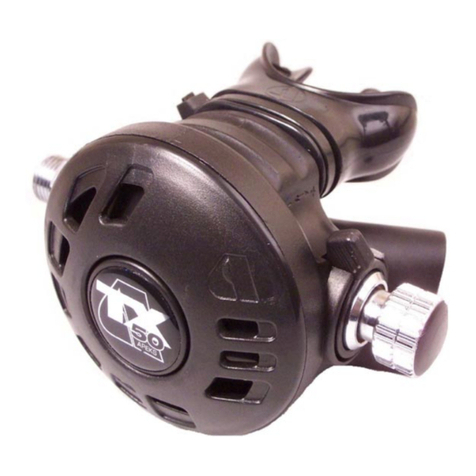
Apeks
Apeks TX100 User manual

Apeks
Apeks Flight User manual
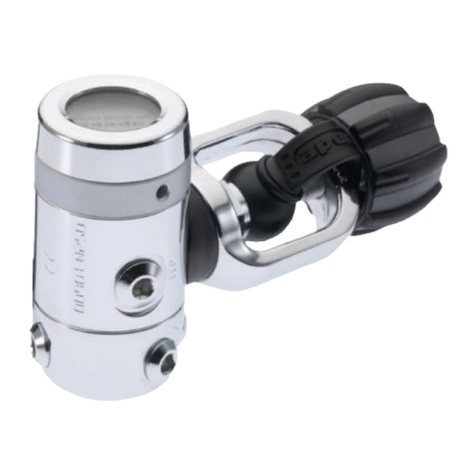
Apeks
Apeks DST User manual
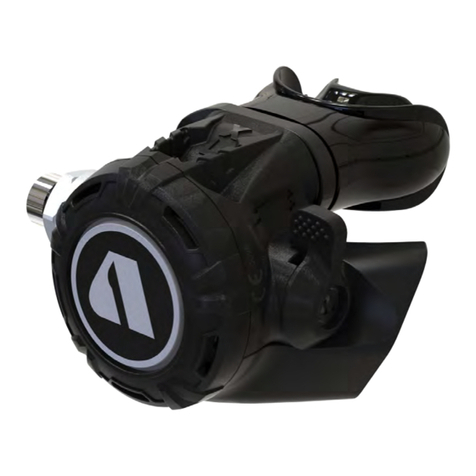
Apeks
Apeks XL4 SECOND STAGE User manual
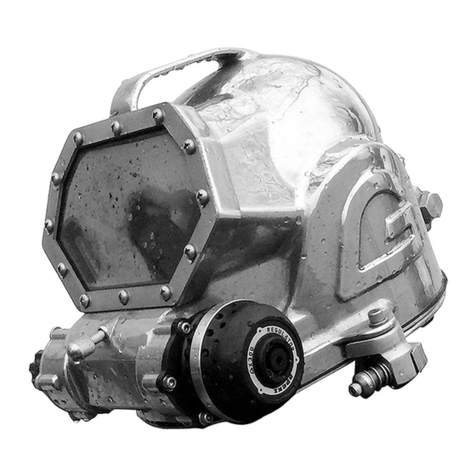
Apeks
Apeks GX300 User manual
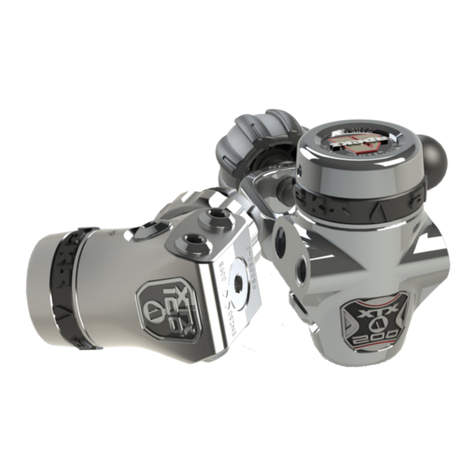
Apeks
Apeks XTX FSR User manual
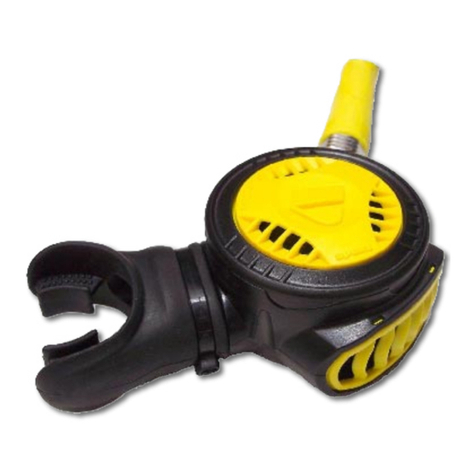
Apeks
Apeks Egress User manual
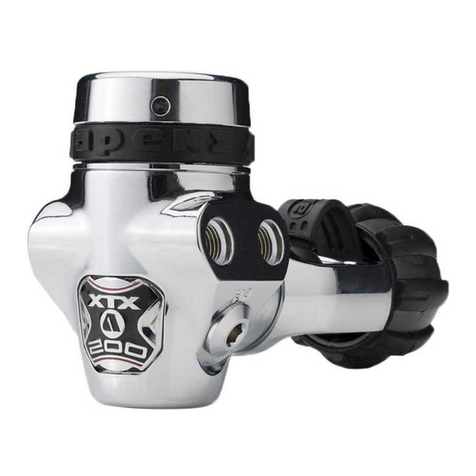
Apeks
Apeks FSR Series User manual
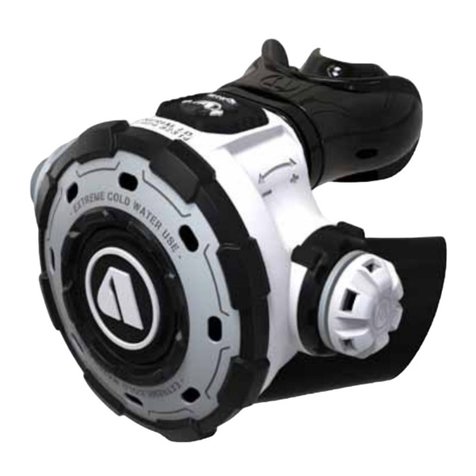
Apeks
Apeks MTX-R User manual
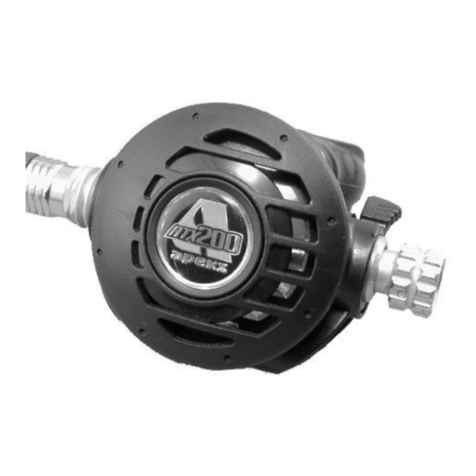
Apeks
Apeks ATX Second Stage User manual
Popular Controllers manuals by other brands
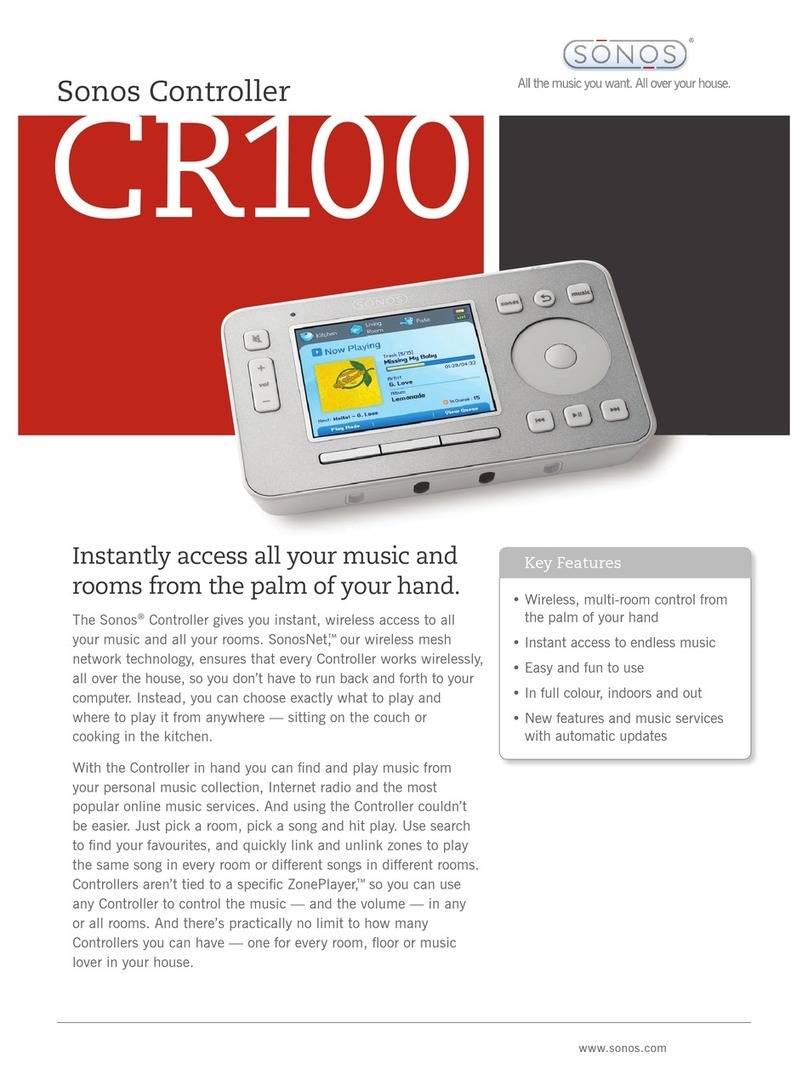
Sonos
Sonos Controller CR100 Brochure & specs

SMC Networks
SMC Networks FC3W5 Series Operation manual
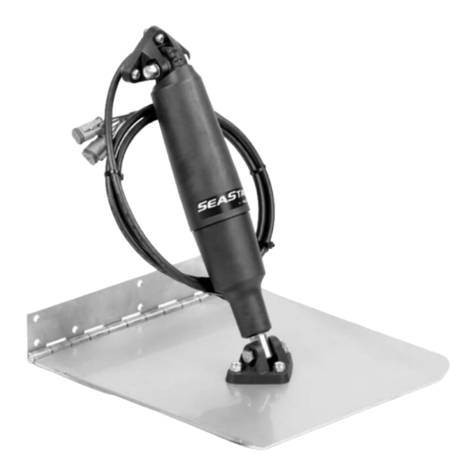
Dometic
Dometic Optimus Adaptive Trim Tab System operating manual
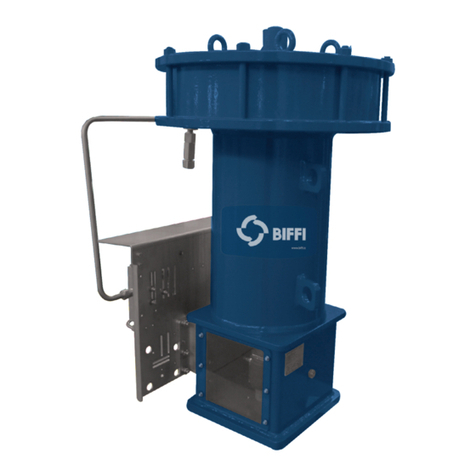
BIFFI
BIFFI PLAS Series Installation, operation and maintenance manual
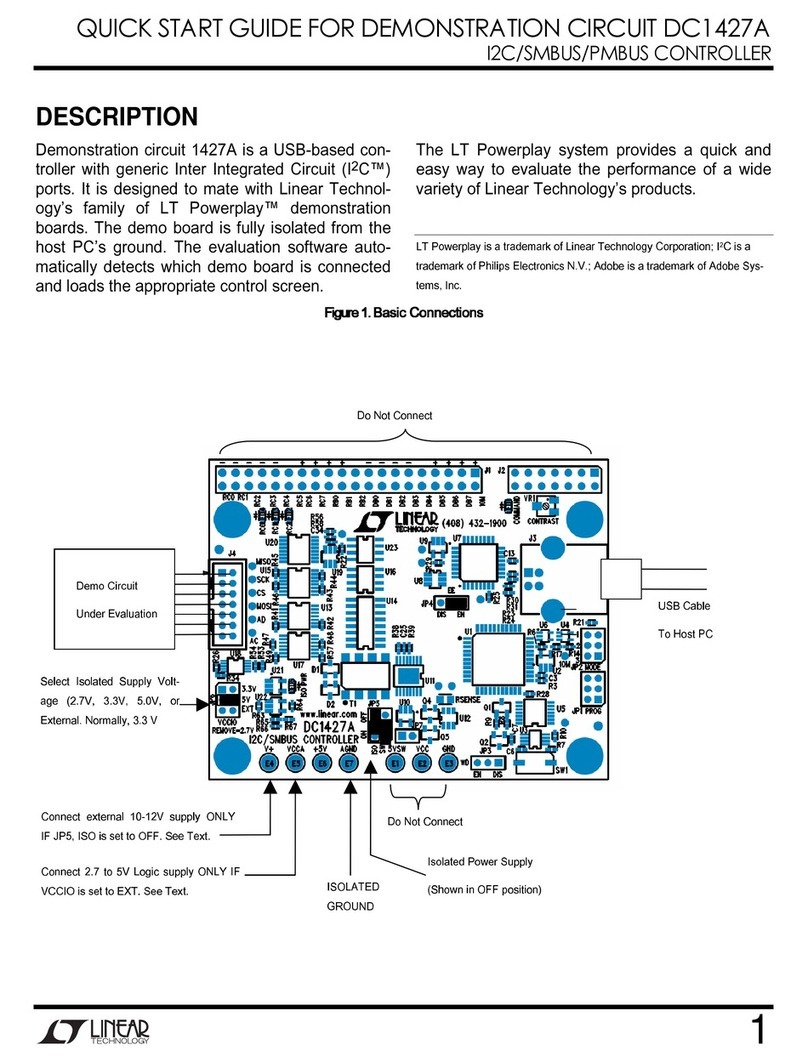
Linear Technology
Linear Technology DC1427A quick start guide
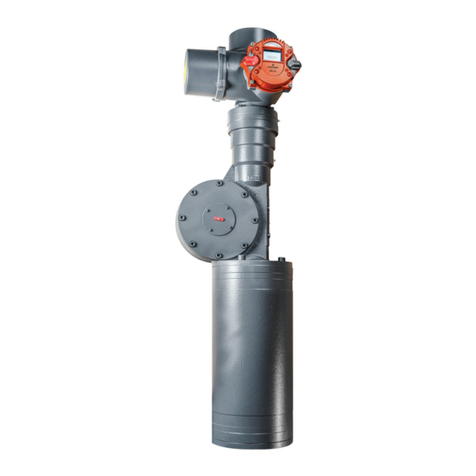
Emerson
Emerson RTS FQ operating manual
